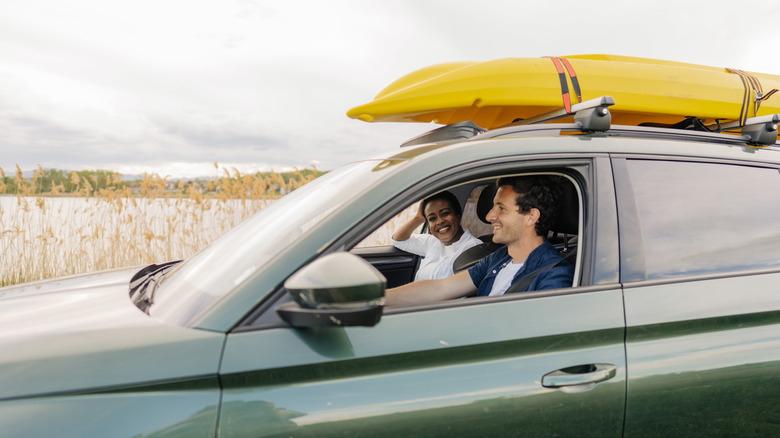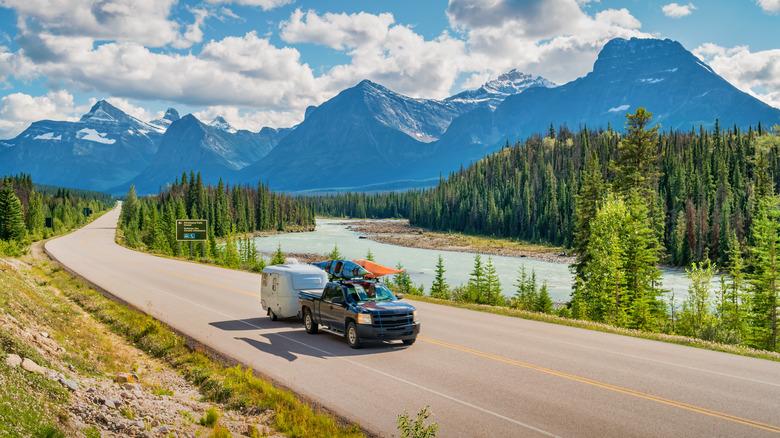How To Avoid Tolls And Save Yourself Money On Your Next Road Trip
If you've ever planned a road trip, you're probably aware that assessing costs prior to travel can be a bit tricky. While it might be somewhat easy to predict what you'll spend on gas and a rental car should you need one, gauging tolls and fees along the way can feel overwhelming. Road trippers can even get caught in a situation where they must drive through cashless toll booths, only to receive a bill later in the mail. While these fees are often below $10 (but not always), on a road trip, especially a long-term one, they can certainly add up.
There are plenty of tools and tips to help you take the more affordable route on your epic road trip. Things like ensuring you have the right toll pass or buying toll coverage if you're using a rental car can save you a few bucks along the way. Use this guide for your next road trip if you want to avoid unexpected toll expenses.
Understanding cashless tolls
Cashless tolls are one of the sneakiest fees road trippers experience. While they can be difficult to avoid, there are precautions you can take prior to traveling to not be hit with the unexpected. EZPass is a great option for those who are traveling in the United States' Northeast and parts of the Midwest, including Pennsylvania, Ohio, West Virginia, Indiana, Illinois, Kentucky, Virginia, North Carolina, Maryland, New Jersey, Delaware, New York, Massachusetts, New Hampshire, Rhode Island, and Maine. It also provides coverage in Florida, but only in the city of Orlando.
Another great option for cashless tolls is PlatePass, an electronic toll payment solution that covers cashless tolls. If you go to Hertz, Dollar Car Rental, or Thrifty Car Rental, you'll be able to get PlatePass, which will help you get through tolls in California, Colorado, Florida, Georgia, North Carolina, Texas, Washington, and the Northeast U.S., so this is a great choice for those who need to rent a car in those states.
Finding alternate routes for savings
Still want to avoid tolls? Another strategy is to simply take an alternative route. There will usually be a free way to get to where you're going via back roads. While this can add some extra road bumps (no pun intended) to your trip, including a longer drive time, lower speed limits, minimal cell service, and dirt or gravel roads with worsened infrastructure, it is definitely more cost-effective.
Sometimes driving toll-free can get tricky, especially when it comes to crossing bridges, which typically have tolls and are much more difficult to navigate around. That's where the Internet comes in handy. If you have a smartphone, downloading Google Maps before you travel can potentially save you money. Google Maps is known to help travelers plan the perfect road trip, so much so that the app offers a "toll-free" option when planning a route. If you're trying to save money, that's definitely the route you'll want to stick with.


